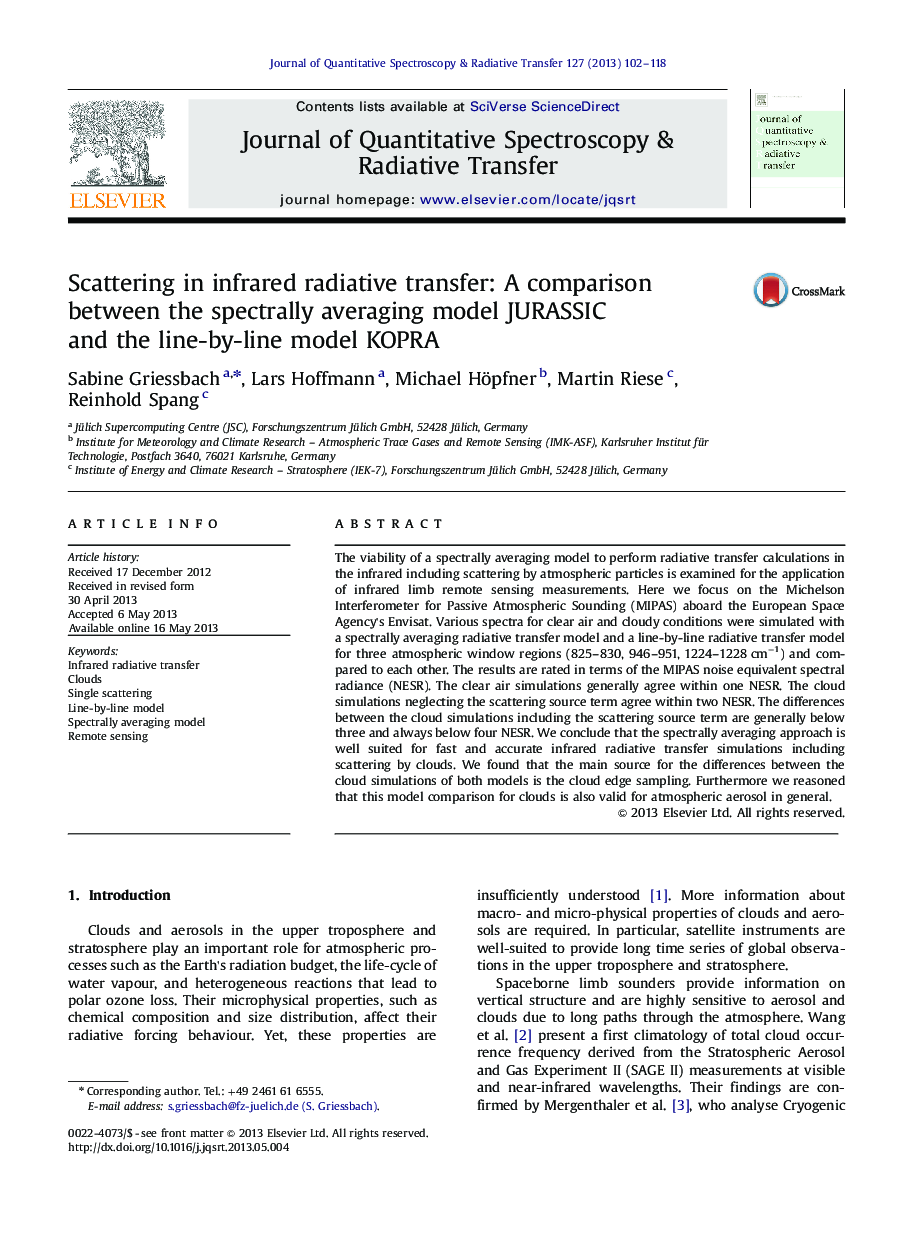| Article ID | Journal | Published Year | Pages | File Type |
|---|---|---|---|---|
| 5428781 | Journal of Quantitative Spectroscopy and Radiative Transfer | 2013 | 17 Pages |
â¢We simulate atmospheric radiative transfer in the infrared.â¢The simulations include single scattering on cloud particles.â¢We compare the results of a line-by-line model with a spectrally averaging model.â¢For clear air as well as cloudy conditions both models agree well.â¢We found that the most crucial aspect of the simulations is the cloud sampling.
The viability of a spectrally averaging model to perform radiative transfer calculations in the infrared including scattering by atmospheric particles is examined for the application of infrared limb remote sensing measurements. Here we focus on the Michelson Interferometer for Passive Atmospheric Sounding (MIPAS) aboard the European Space Agency's Envisat. Various spectra for clear air and cloudy conditions were simulated with a spectrally averaging radiative transfer model and a line-by-line radiative transfer model for three atmospheric window regions (825-830, 946-951, 1224-1228Â cmâ1) and compared to each other. The results are rated in terms of the MIPAS noise equivalent spectral radiance (NESR). The clear air simulations generally agree within one NESR. The cloud simulations neglecting the scattering source term agree within two NESR. The differences between the cloud simulations including the scattering source term are generally below three and always below four NESR. We conclude that the spectrally averaging approach is well suited for fast and accurate infrared radiative transfer simulations including scattering by clouds. We found that the main source for the differences between the cloud simulations of both models is the cloud edge sampling. Furthermore we reasoned that this model comparison for clouds is also valid for atmospheric aerosol in general.
